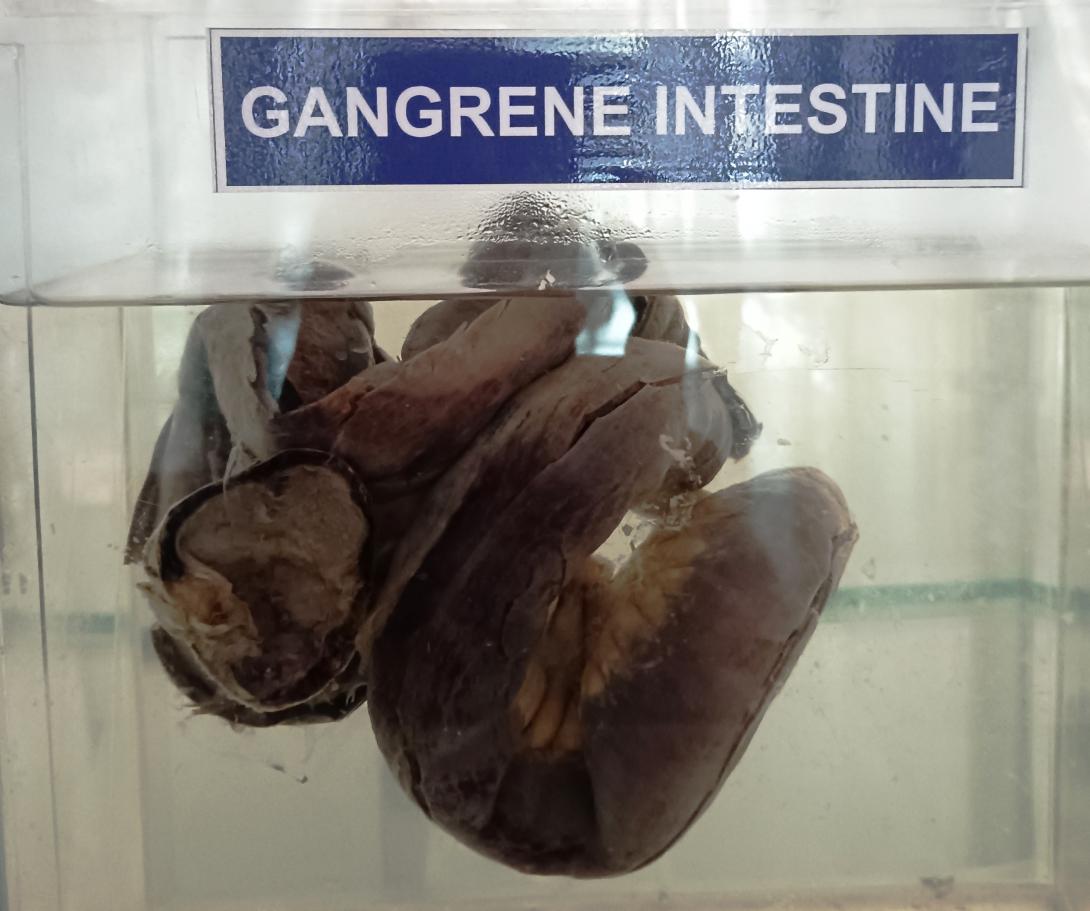Gangrene of the intestine is a condition where there is death of a portion of the intestinal tissue due to insufficient blood supply. The gross anatomy of the intestine affected by gangrene includes the following features:
- Color: The affected portion of the intestine appears dark, purple or black due to lack of oxygenated blood supply.
- Size: The affected portion may appear swollen or distended due to accumulation of gas and fluids in the intestine.
- Texture: The affected portion of the intestine may feel softer or more flaccid compared to the normal, healthy tissue.
- Perforation: If the condition is severe, the affected tissue may perforate or rupture, leading to the leakage of fecal matter into the abdominal cavity.
- Blood vessels: The affected portion of the intestine may have damaged blood vessels or complete occlusion of blood flow leading to ischemic damage.
- Surrounding tissue: The surrounding tissue of the affected portion may be inflamed, and there may be signs of infection, such as pus formation or abscess.
- Treatment: Treatment for gangrene of the intestine typically involves surgical removal of the affected portion of the intestine followed by antibiotics to prevent or treat any associated infections.
Rack Number
Specimen Number
49

